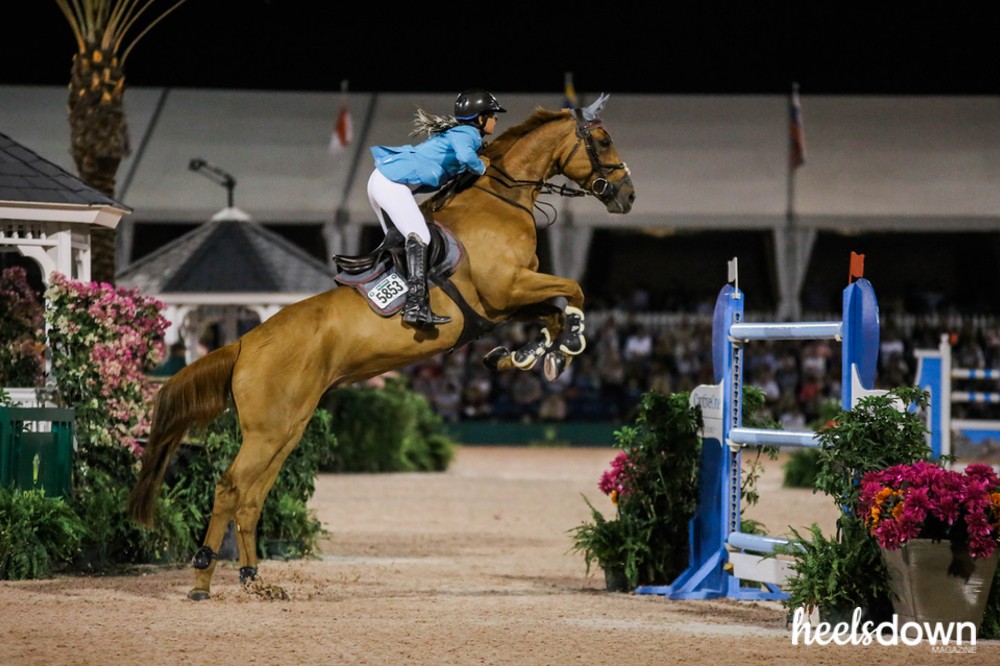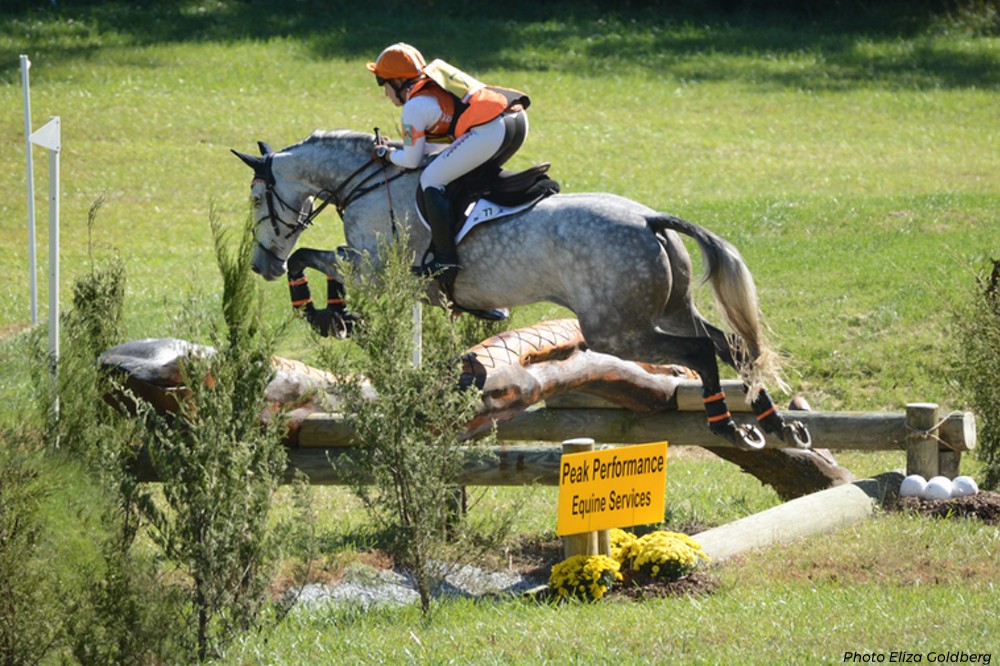“There Are No Bad Distances, There Are Difficult Distances”

Seeing a distance to a fence is a skill that never stops developing for riders. Sharon White has had decades of practice over the biggest and toughest fences in the world. Beyond her credentials as an international five-star eventer, she’s also a top-tier certified eventing instructor and a highly-sought coach. She has taught countless riders how to create clear show jumping and cross-country rounds, and she gave Heels Down Mag some of her expert knowledge.

How to Practice at Home
Knowing how many strides stand between you and your fence – and what kind of adjustments you’ll need to make to get there – takes patience and diligence.
“Repetition is the most important thing for knowing a distance because it’s how both horses and riders learn,” says Sharon of Summit Point, W. Va. “The textbook says, ‘If you maintain a rhythm and a line, your distance will appear in front of you.’ I live by that. So you maintain a rhythm and stay on the exact line you want, and you practice that over and over.”
But jumping every day is out of the question if you want a sound and happy horse. Sharon says that rails on the ground are all you need to keep your number of repetitions up.
“Cantering over rails on the ground is one of the best ways to practice, because you can repeat it frequently without over-jumping your horse. I prefer cavaletti to rails because if you’re cantering, horses tend to ignore rails on the ground, so if you can raise them up just a little bit – even just a couple of inches – the horse will pay attention to them.”
When it’s time to jump, know your distances in feet, Sharon advises. “You need to be able to rattle off that 24’ is a one stride, 36’ is a two, and from there on. Then you can set up what you want and practice.” Varying the number of strides between two rails on the ground helps you develop a sense for distances and an adjustable canter.
“Put two rails on the ground, 24’ apart. Canter through it in one stride. Then, condense the canter coming in and do it in two, then go back and do it in one. That will help you learn a longer, more open stride and what is called a ‘gappy’ distance as well as a shorter stride and how to get a little closer to a jump.”
Don’t be afraid of those difficult distances because those are the ones that teach you what you need to do with your body to make it work – either adding a lot of leg or sitting still and quiet.
The Bad Distance
Every rider who jumps has felt the panic of cantering into a line of jumps and not seeing a distance at all. Sharon explains that riders need to rewire their fear of ‘the bad distance’.
“Know that there are no bad distances. There are difficult distances. If you’re getting yourself into a difficult distance, which we all do, you have to know how to react and that’s trial and error. Don’t be afraid of those difficult distances because those are the ones that teach you what you need to do with your body to make it work – either adding a lot of leg or sitting still and quiet.”
Since every horse has a slightly different natural stride length, the same line on two different horses might require a very different eye and ride.
“You have horses with long rangy strides, short choppy strides, in perfect self-carriage, or on the forehand. You have to learn how to create that rhythm and straightness so no matter what horse you’re on or what their stride length is, you can find your distance and know how to react accordingly. If you jump into a line perfectly, sit still. If you get in a little deep to the first jump, you’re going to have to land and cluck. If you take a flier in, you’re going to have to land and say, ‘Easy, son.’”
Her final tip? Count out loud.
“If you’re learning your distances, just count continuously up from ‘one’ so you hear the rhythm until you jump the jump and then start over again. Later in your education you can count down to the jump, when you can recognize how many strides out you are.”


